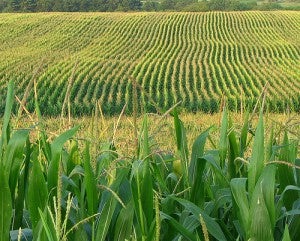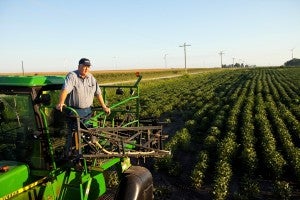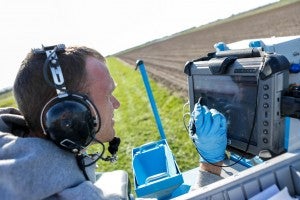Agricultural carbon markets get yet another boost
 In the past three months, three new revenue opportunities have emerged for growers. In June, the first ever carbon offset protocol for crop-base agriculture in a cap-and-trade market was approved for U.S. rice growers by the California Air Resources Board (ARB). The “rice protocol” announcement was followed shortly after by approval of a voluntary grasslands protocol, which rewards farmers for avoiding the conversion of grasslands to cropland.
In the past three months, three new revenue opportunities have emerged for growers. In June, the first ever carbon offset protocol for crop-base agriculture in a cap-and-trade market was approved for U.S. rice growers by the California Air Resources Board (ARB). The “rice protocol” announcement was followed shortly after by approval of a voluntary grasslands protocol, which rewards farmers for avoiding the conversion of grasslands to cropland.
And now, USDA has demonstrated its interest in and support of another market-based approach for growers: increasing fertilizer use efficiency. Thanks to a new grant from the U.S. Department of Agriculture (USDA), EDF and partners will be helping almond and corn farmers reduce fertilizer runoff and nitrous oxide emissions, and earn greenhouse gas credits that can generate revenue.
Here’s what this project will entail:
Reduce emissions
Growers are under increasing pressure to reduce nitrogen losses, which occur when fertilizer not absorbed by crops runs off into waterways and is released into the air. The fertilizer can run off the field and cause hypoxic zones or be converted to nitrous oxide, a greenhouse gas 300 times more powerful than carbon dioxide. Nearly 75 percent of U.S. nitrous oxide emissions come from agricultural activities such as applying fertilizer and other cropping practices.
 This pilot project will work with growers across the U.S. to develop a multi-farmer pilot project which will demonstrate and quantify how growers can alter farming practices to prevent nitrogen losses to the air, and thereby reduce nitrous oxide emissions.
This pilot project will work with growers across the U.S. to develop a multi-farmer pilot project which will demonstrate and quantify how growers can alter farming practices to prevent nitrogen losses to the air, and thereby reduce nitrous oxide emissions.
Over the past several years there has been a dramatic growth in tools and technologies available to growers, which help them increase nutrient use efficiency on their fields. Optimizing fertilizer will not only save money on input costs, but can also earn farmers additional revenue.
Scale access to carbon markets
EDF and its partners will help farmers participate in environmental markets – both voluntary and the California compliance market – that offer payments to growers who collect and submit information on nitrogen applications.
We will also advocate for approval of an ARB compliance-grade “fertilizer protocol” for use under California’s cap-and-trade program.
More than 400 million acres of cropland could be eligible for participation in this protocol, and growers could contribute millions of tons of greenhouse gas reductions. Once a nitrogen fertilizer protocol is adopted by ARB, pilot project growers will be able to transition into California’s compliance market.
Facilitate data tracking
 Farmers that collect fertilizer application data can quantify the reduction in the amount of nitrous oxide emissions from their fields, which becomes a saleable carbon credit. EDF and partners will work with growers to help them collect this data, and connect them with the appropriate market opportunity.
Farmers that collect fertilizer application data can quantify the reduction in the amount of nitrous oxide emissions from their fields, which becomes a saleable carbon credit. EDF and partners will work with growers to help them collect this data, and connect them with the appropriate market opportunity.
USDA’s Natural Resources Conservation Service (NRCS) uses Conservation Innovation Grants to stimulate development and adoption of innovative conservation approaches and technologies. As USDA Secretary Tom Vilsack announced this morning, “This year’s slate of projects represent the next generation of natural resources conservation.”
Payment for on-farm fertilizer efficiency measures will indeed be a big part of the next generation of conservation.
Participating partners in executing this grant include the Almond Board of California; American Carbon Registry; Applied Geosolutions; Carbon Credit Solutions; Climate Action Reserve; Coalition on Agricultural Greenhouse Gases; Delta Institute; K·Coe Isom; United Suppliers; UC Davis; and, Viresco Solutions.
Related Links:
It’s official! Rice farmers now eligible for carbon offset payments
How agriculture’s resilience to climate change benefits us all
Why an Arkansas rice farmer is betting on California’s carbon market (and you should too)












